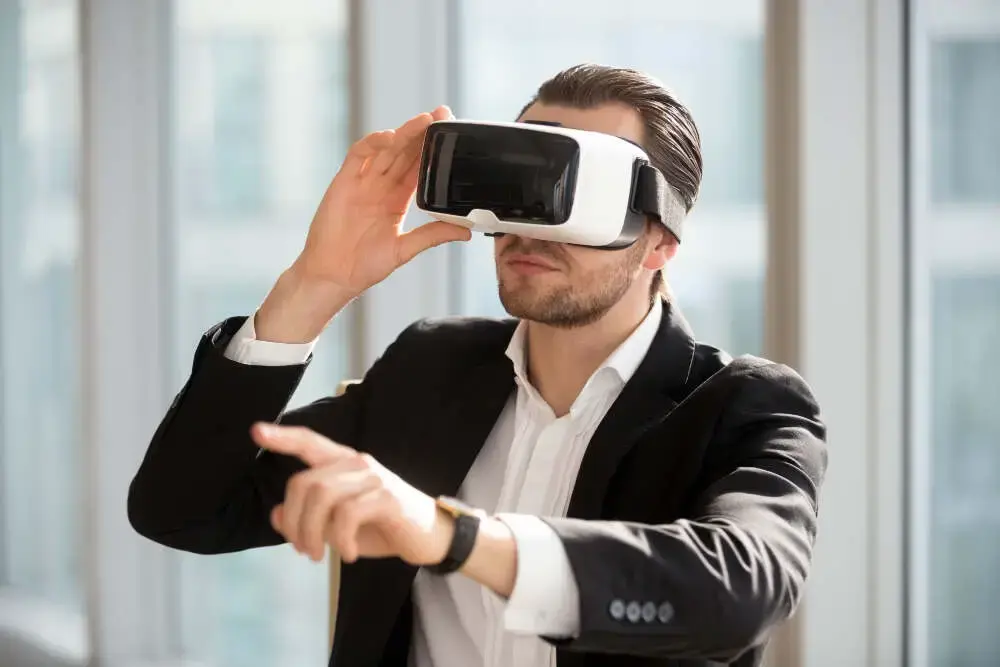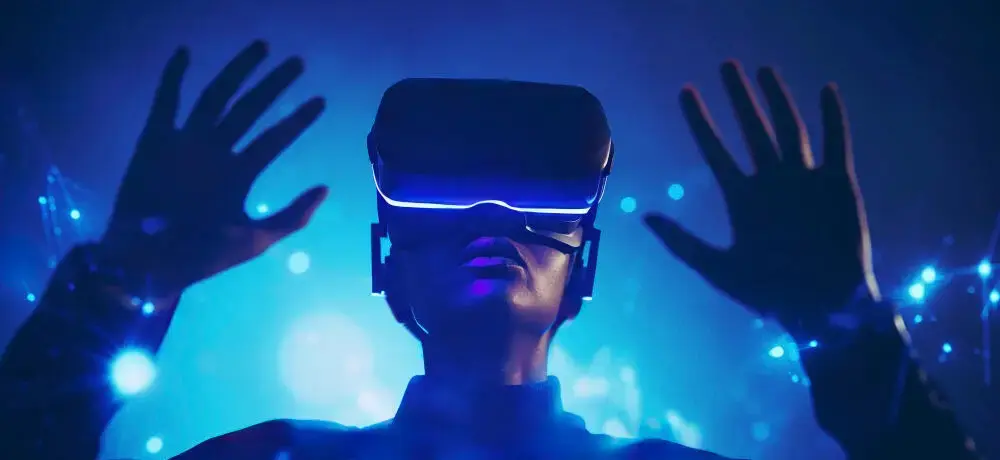
Ever scrolled through social media until your eyes felt like sandpaper? Imagine that feeling cranked up to eleven –that's what extended use of AR and VR can feel like for your peepers.
These days, screens seem to be everywhere, and the newest hotshots are Augmented Reality (AR) and Virtual Reality (VR). While AR overlays cool digital graphics onto our world, VR throws you headfirst into a completely computer-generated environment.
From epic alien battles to mind-blowing educational experiences, AR and VR promise amazing adventures. But what about the impact on our most precious windows to the world – our eyes?
Let's discuss the potential eye strain risks of spending too much time in these immersive realities, and explore ways to keep your vision healthy and happy.
- Eye Strain Risks of AR/VR
- Individual Factors Affecting Eye Strain
- Preventative Measures for Healthy AR/VR Use
Eye Strain Risks of AR/VR

Focus Fatigue
Our eyes, akin to tiny cameras, constantly adjust focus as we shift our gaze between near and far objects. In the real world, this focus continuously changes, giving our eye muscles a break. However, AR/VR displays lock focus at a fixed distance, typically a few feet away. This constant effort to focus on a virtual object, especially when misaligned with the real world, can lead to eye strain, blurry vision, and headaches.
Cybersickness
Some users experience nausea, dizziness, and other symptoms akin to motion sickness due to a mismatch between visual information and inner ear balance. VR environments can create a sense of movement not perfectly matched by the vestibular system in our inner ear, leading to feelings of disorientation and discomfort. While not directly related to eye strain, cybersickness can certainly diminish the VR experience.
Reduced Blinking
Engrossed in AR/VR experiences, we tend to blink less frequently. Blinking is crucial for healthy eyes, spreading tears across the cornea to lubricate and nourish the surface. Reduced blinking disrupts this tear film, causing dryness, irritation, and a gritty sensation.
Vergence-Accommodation Conflict
Our eyes naturally function in tandem. When focusing on nearby objects, our eyes converge slightly inwards. Simultaneously, the lens in each eye adjusts its shape (accommodation) to bring the object into clear focus. In the real world, these systems (vergence and accommodation) work seamlessly together. However, AR/VR can disrupt this harmony. For instance, in VR, the virtual image may appear close but be displayed on a screen several feet away.
Individual Factors Affecting Eye Strain
Susceptibility to eye strain from AR/VR can vary depending on several factors:
1. Age: Children and young adults generally adapt better to AR/VR experiences, whereas older adults may experience more pronounced eye strain due to the natural decline in accommodative ability (focusing flexibility) with age.
2. Pre-existing Eye Conditions: Individuals with pre-existing conditions like nearsightedness, farsightedness, astigmatism, or binocular vision problems may be more susceptible to eye strain from AR/VR use.
3. Overall Eye Health: General eye health also plays a role. People with dry eye syndrome or other eye conditions may experience greater discomfort with AR/VR..


Preventative Measures for Healthy AR/VR Use
By following these preventative measures, you can maximize your enjoyment of AR and VR while minimizing the risk of eye strain and other discomforts:
1. The 20-20-20 Rule: This simple rule applies to any prolonged screen time, including AR/VR. Every 20 minutes, look away from the device and focus on something 20 feet away for 20 seconds. This allows your eye muscles to relax and refocus. Consider setting a timer on your phone or smartwatch as a reminder.
2. Adjust Display Settings: Many AR/VR devices allow you to adjust brightness and other display settings. Reduce the screen brightness to a comfortable level, ideally matching the ambient light in your environment. Some devices may also offer settings to adjust focus distance or interpupillary distance (IPD) – the distance between your pupils.Experiment with these settings to find what works best for you.
3. Blink Consciously: Make a conscious effort to blink regularly, especially during intense AR/VR sessions. Set reminders or associate blinking with specific actions in the game or application.
4.Take Breaks Based on Your Needs: Listen to your body. If you experience eye strain, headaches, dizziness, or nausea, take a break longer than 20 minutes.
Final Thoughts
AR and VR offer a glimpse into a future filled with exciting possibilities. From revolutionizing education and training to fostering new forms of entertainment and social interaction, these technologies have the potential to profoundly impact our lives. However, as with any new technology, it's important to be mindful of potential health risks, particularly those related to eye strain. By following the preventative measures outlined above and prioritizing healthy habits, you can ensure your journey into the world of AR/VR is both enjoyable and comfortable. Remember, your eyes are a precious gift – take care of them so they can continue to show you the wonders of the world, both real and virtual.
To ensure your continued enjoyment of AR/VR, prioritize healthy eye habits. Schedule regular eye exams with a qualified professional at Elite Eye Care.
